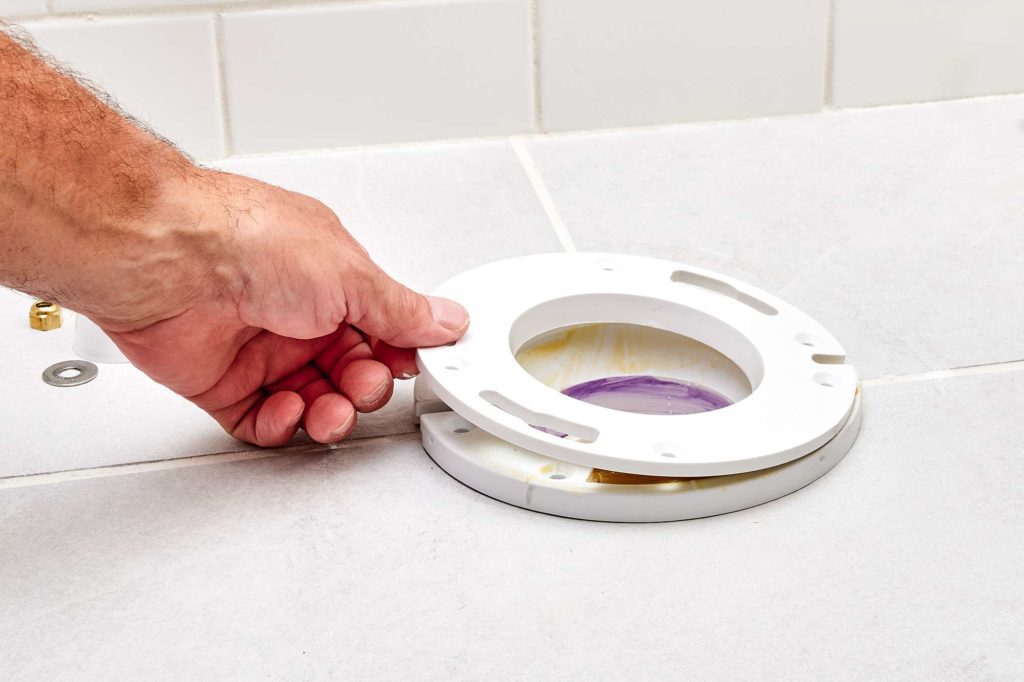You must be familiar with toilet flanges if you’re a homeowner. But in case you haven’t, this part is set at the surface of the toilet drain pipe and assists in securing the toilet to the bathroom floor. These rounded parts are built from metal, rubber, or PVC. Bolts help to keep them in place. Toilet flanges that become loose or worn out can leak, resulting in future damage. You will need to learn how to replace a toilet flange if you have this problem in your home.
Сравнение Booi казино с другими казино в России
Игорный бизнес в России в последние годы стремительно развивается, предлагая игрокам все больше возможностей для азартного времяпровождения. Одним из самых популярных вариантов развлечения стали онлайн-казино, которые предлагают широкий выбор игр и выгодные бонусы. В этой статье мы рассмотрим Booi казино и сравним его с другими казино в России, чтобы помочь вам сделать правильный выбор в мире онлайн-гемблинга.
Мы рассмотрим такие аспекты, как ассортимент игр, уровень безопасности, качество обслуживания клиентов и бонусные программы, чтобы вы могли сравнить Booi казино с другими популярными онлайн-казино в России. Какие преимущества предлагает Booi казино и чем оно отличается от других платформ? Какие игры доступны в Booi казино и насколько они увлекательны? Какие бонусы и акции доступны для новых и постоянных игроков? Присоединяйтесь к нам, чтобы узнать все ответы и сделать осознанный выбор в мире онлайн-гемблинга.
Особенности Booi казино: преимущества и уникальные возможности
Сравнение Booi казино с другими казино в России позволяет выделить несколько преимуществ данной платформы. Во-первых, Booi казино предлагает широкий выбор игр от ведущих разработчиков, включая такие известные бренды, как NetEnt, Microgaming и Play’n GO. Кроме того, Booi казино предлагает различные бонусы и акции для своих игроков, что делает игру еще более увлекательной и выгодной. подробнее о доступных бонусах и акциях можно узнать на официальном сайте Booi казино.
Во-вторых, Booi казино обеспечивает надежную и безопасную игровую платформу. Они используют современные технологии шифрования, чтобы защитить персональные данные игроков и обеспечить безопасность финансовых транзакций. Кроме того, Booi казино имеет лицензию от Кюрасао, что гарантирует соблюдение всех необходимых стандартов и правил. Подробнее о мероприятиях по обеспечению безопасности можно найти на официальном сайте Booi казино.
Сравнение Booi казино с другими онлайн-казино в России: выбор игр, бонусы и акции
Booi казино отличается от других казино в России своими уникальными особенностями и преимуществами. Во-первых, Booi предлагает широкий выбор игровых автоматов и настольных игр от ведущих провайдеров, таких как NetEnt, Microgaming и Play’n GO. Здесь вы найдете все самые популярные игры, а также новинки, которые только появились на рынке. Кроме того, Booi казино предлагает щедрые бонусы и акции для своих игроков, что делает игру еще более интересной и выгодной.
Во-вторых, Booi казино обеспечивает высокий уровень безопасности и надежности. Сайт казино защищен современными технологиями шифрования, что гарантирует сохранность ваших личных данных и финансовых операций. Кроме того, Booi имеет лицензию, выданную Кюрасао, что подтверждает его законность и надежность. Это означает, что игроки могут быть уверены в честности игры и справедливости выплат. Все это делает Booi казино одним из лучших выборов для игры в России.
Безопасность и надежность Booi казино по сравнению с другими казино в России
Booi казино – это одно из самых популярных онлайн-казино в России, и оно имеет свои уникальные особенности, которые отличают его от других казино в стране. Во-первых, Booi казино предлагает широкий выбор игр от ведущих разработчиков, таких как NetEnt, Microgaming и Play’n GO. Это означает, что игроки могут наслаждаться самыми популярными и качественными играми на рынке.
Во-вторых, Booi казино предлагает щедрые бонусы и акции для своих игроков. Новые игроки могут получить приветственный бонус на первый депозит, а также дополнительные бонусы на следующие депозиты. Кроме того, казино часто проводит акции и турниры, где игроки могут выиграть дополнительные призы и бонусы. Это делает игру в Booi казино еще более увлекательной и выгодной.
Третья особенность Booi казино – это удобный и безопасный процесс пополнения и вывода средств. Казино предлагает различные способы оплаты, включая банковские карты, электронные кошельки и криптовалюты. Все транзакции проходят через защищенные соединения, что гарантирует безопасность персональных данных игроков.
Наконец, Booi казино имеет профессиональную и отзывчивую службу поддержки, готовую помочь игрокам в любое время суток. Они доступны через онлайн-чат, электронную почту и телефон. Команда поддержки готова ответить на любые вопросы и решить любые проблемы, с которыми могут столкнуться игроки. В целом, сравнивая Booi казино с другими казино в России, можно сказать, что оно предлагает высокое качество игр, щедрые бонусы, удобные платежные методы и отличную службу поддержки.
Отзывы игроков: сравнение впечатлений от Booi казино и других казино в России
Booi казино – это одно из самых популярных онлайн-казино в России. Оно отличается от других казино своим уникальным дизайном и интуитивно понятным интерфейсом. Booi предлагает широкий выбор игр от ведущих разработчиков, таких как NetEnt, Microgaming и Play’n GO. Бонусная система казино также является одной из самых привлекательных, с регулярными акциями и щедрыми призами для игроков.
Одним из главных преимуществ Booi казино является его высокая степень безопасности и надежности. Казино использует передовые технологии шифрования, чтобы гарантировать защиту личных данных и финансовых операций игроков. Кроме того, Booi имеет лицензию от Кюрасао, что подтверждает его законность и соблюдение всех необходимых правил и регуляций.
По сравнению с другими казино в России, Booi предлагает более выгодные условия для игроков. Здесь вы можете найти более высокие проценты выплат, щедрые бонусы и акции, а также больше вариантов для пополнения и вывода денег. Кроме того, Booi казино предлагает удобную систему поддержки, готовую помочь вам в любое время.
В целом, Booi казино является превосходным выбором для российских игроков. Оно сочетает в себе качественные игры, безопасность, щедрые бонусы и удобство пользования. Если вы ищете надежное и выгодное онлайн-казино, то Booi – это отличный вариант для вас.
В заключение, Booi казино представляет собой привлекательное и надежное онлайн-казино, которое предлагает широкий выбор игр, щедрые бонусы и удобный интерфейс. При сравнении с другими казино в России, Booi выделяется своей отличной репутацией, высоким уровнем безопасности и профессиональной поддержкой клиентов. Благодаря удобной мобильной версии, игроки могут наслаждаться азартом в любом месте и в любое время. Если вы ищете надежное и захватывающее казино, Booi стоит попробовать свою удачу.
Contact Eco pro plumbing if you find DIYs difficult or do not possess the equipment. They will send in the best plumbers in Cambridge Ontario. They also offer the best toilet repair plumber.
Bring out the Necessary Supplies and Equipment.
Ensure you have the following items close before learning how to repair a toilet flange. You can get a brand-new toilet flange from your neighborhood store. But remember to bring your existing toilet flange because this will enable you to select the best alternative for your toilet.
- Bolts for the Toilet Flange: Get some bolts to attach to your new flange. You should replace the old one since it might be rusted or worn out.
- Wax Ring: This item secures the toilet’s flange to the base.
- Wrench: You will need this tool to remove the existing bolts from the toilet flange. You can also use them to eliminate the ones around the flange. Pick a multi-bit screwdriver to unscrew the screws holding the flushing toilet together.
- Putty Knife: Use this tool to remove old wax from the flange seal.
Steps to replace a toilet flange
- Take the Toilet Out
Disconnect the water supply from the toilet. Close the knob on the back of your device to accomplish this. Then flush the toilet multiple times to empty the tank. Remove the hose that delivers water to your toilet before starting the replacement process. Next, prepare a sizable open container or have some towels on standby to collect any potential leaks. It would help if you used a newspaper or a tarp to cover the bathroom floor.
- With a Rag, Block the Outflow Pipe.
To stop your bathroom from smelling unpleasant, firmly place a rag inside the pipe. So that you can remove it quickly, don’t stuff it too far into the pipe. Alternatively, you can cease the pipe as soon as you remove the old flange. But stopping it here may prevent small objects like nuts and screws from falling into the pipe.
- Examine and clean the Toilet Flange.
Look for the toilet’s faulty wax ring. Here, it secures the joint between your toilet’s base and flange. If you see it, scrape it off with a putty knife. Wax particles will attach to the knife as you work. Wipe your instrument with some old newspaper or a towel to get rid of them. Turn your attention to the screws holding the flange to the bathroom floor. Loosen them, then store them away for future use. These serve as last-resort replacement screws in case the ones included in your flange kit miss.
- Install The New Flange
The new flange should now have the bolts in it. You should remove the bolt’s nut and washer. Place two bolts in their corresponding holes and place these items across from one another. Use the bolts from the prior flange if they are in fine condition. Connect the outflow pipe with the new flange. While the flange’s neck should tightly fit into the pipe, try to let it rest on the ground.
- Establish The New Flange
The bathroom floor and flange lip should both obtain the screws. To fasten screws into the pre-drilled holes in the flange rim:
- Drive the tool into the screws.
- When spinning the tool, move it in a clockwise direction.
- Create new pilot holes with a drill if the previous ones are damaged.
- Tap plastic wall anchors into the holes with a mallet if you also find that the new screws won’t fit in them.
- Install the Toilet
On the flange, place the toilet. Place the holes at their base so the bolts sticking out from the flange will fit into them. Push the toilet firmly down to the rear of the bowl rim as soon as it touches the flange to shape the wax ring and secure the attachment.





